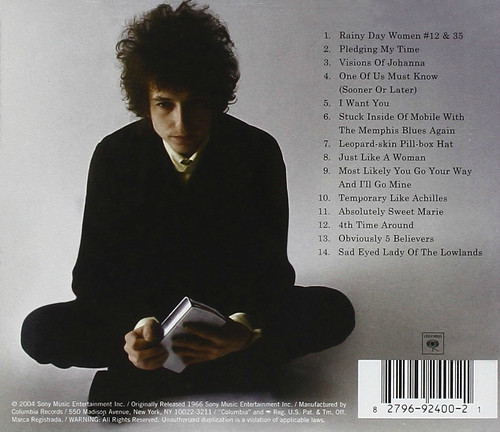
A bi-weekly, non-comprehensive roundup
of news of beer and other things.
Weeks 41/42
9 October - 22 October 2016
- 22 October 2016
AT&T to buy Time Warner (and thus CNN) for $85.4 billion, consolidating media power. FCC to review for antitrust concerns.
—Via Washington Post. - 20 October 2016
New strain of powdery mildew is found to be attacking Cascade hops, a variety initially bred to have genetic resistance to the disease.
—Via [U.S.] Brewers Association. - 19 October 2016
Travel company Travelocity calculates Beer Tourism Index, the top 20 large and small city beer destinations, using four metrics: breweries per 1 million residents, rideshare availability, nonstop air destination, lodging score. Portland is tops. (Bend, Oregon, is tops among small cities.)- —Via [U.S.] Brewers Association.
- Compare to this ranking which lists Pittsburgh as tops.
—Via real estate brokerage firm Redfin (at YFGF).
The blob! Interantional brewing conglomerate Anhwueser-Busch InBev which only recently bought its biggest rival SABMiller for $107 billion, now has purchased, via its wholly-owned venture company ZX Ventures, the largest American homebrew supply business, Northern Brewer, for an undisclosed sum.
—Via New York Times.
Phil Chess, co-founder of Chess Records —one of the most influential mid 20th century record labels for blues and early rock 'n' roll— has died at age 95.
—Via Bloomberg News.
On 7 August, for the first time ever, wind power generated all of Scotland's electricity. On average, more than half the country’s electricity now comes from zero-carbon sources such as wind, hydro and solar, and the latest target of 100 percent by 2020 may be within reach. The United States — with a population 60 times as large and a land mass 120 times greater — is nowhere near that level, hovering at around 13 percent.
—Via Washington Post.
Nearly 200 countries adopt an amendment to the 1987 Montreal Protocol to phase down the use of hydrofluorocarbons, or HFCs, powerful greenhouse gases.
—Via Washington Post.
Thirty-eight years today, 14 October 1978, President Jimmy Carter signed a bill into law fedeally 'legalizing' brewing at home.
—Via Craft beer & Brewing.
Bad weather in Canada could significantly reduce the 2016 malting barley crop. If so, beer costs, especially for 'craft' beer, would rise.
—Via CBC News.
Citing slower growth and an increasingly more competitive craft beer landscape, San Diego’s Stone Brewing Company today laid off nearly 75 employees as part of what it termed a “restructuring.” The cutbacks come on the heels of completing of two capital expenditure projects — a $25 million Berlin brewery and a $75 million Virginia brewery. The company is also planning to open a 10,000 sq. ft. pilot brewery and tasting room in Napa and recently agreed to license its name to a $26 million hotel concept in Escondido, Calif., where the company is headquartered.
—Via Brewbound.
Bob Dylan was awarded the 2016 Nobel Prize for “having created new poetic expressions within the great American song tradition.” Dylan is the first American to win the prize since Toni Morrison in 1993.
—Via Washington Post.
Brooklyn Brewery, the 12th largest 'craft' brewery in the United States (producing 300,000 barrels annually), has sold a 24.5% minority stake to Japan conglomerate Kirin Holdings in a bid to bring the beer producer’s ales to new Asian markets. The [U.S.] Brewers Association says that a brewery can be deemed independent, and thus 'craft', as long as minority control is 25% or less. Just under the 'craft' wire for Brooklyn.
—Via Fortune.
The Great American Beer Festival, by the numbers. 35th anniversary of the festival; 30th edition of the GABF competition; 1,752 breweries in the competition from 50 states plus Washington, D.C.; 7,227 beers judged, a nearly 9 percent increase over 2015; 96 style categories judged; Category with highest number of entries: American-Style India Pale Ale.
—Via Jay Brooks, at Brookston Beer Bulletin.
Anheuser-Busch InBev announced today that it has completed its $108 billion purchase of SABMiller. The combined company will now be called (trumpets, please) Anheuser-Busch InBev. Bye, bye Miller Brewing of American brewing history. MolsonCoors now has the perpetual U.S. rights to all of the brands currently in the MillerCoors portfolio for the U.S. market, including import brands such as Peroni and Pilsner Urquell, and full ownership of the Miller brand portfolio everywhere in the world outside of the U.S.
—Via BeerPulse.
After splitting earlier this year (over issues related to 'craft'/non-'craft' brewery ownership, the Colorado Brewers Guild and the breakaway Craft Beer Colorado to reunite.
—Via Denver Business Journal.
Yahoo has secretly scanned incoming emails of hundreds of millions of users to comply with an order from the U.S. intelligence community. How is this not illegal, and the government's action not a violation of the 4th, 5th, and 6th amendments to the Constitution?
—Via Washington Post.
-----more-----































